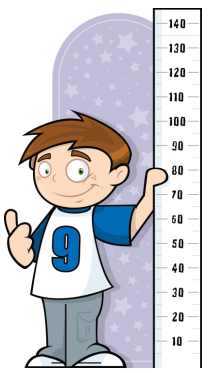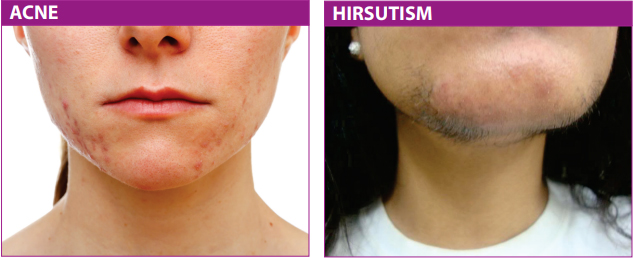Normal growth and pubertal development is a complex interplay of genetics, hormones, nutrition, sleep, exercise, psychosocial environment and general health. Failure to gain height appropriate for age,sex and community norms could signal an underlying medical problem. Most cases are treatable without any long-term side effects, if detected in time.
What are the causes of short stature
- Genetic
A child’s growth pattern usually follows the parents’ growth pattern. Children of tall parents are usually tall and vice-versa. Children of parents who were “late bloomers”and had slow growth and delayed puberty may follow their parents growth pattern.This is called as constitutional delay in growth and puberty. The final height of such children is usually normal. - Congenital defects
Includes chromosomal abnormalities like Down’s syndrome, Turner’s syndrome; skeletal deformities like short limbed dwarfs; & intra-uterine growth retardation (IUGR). IUGR can result from smoking/alcohol intake & infections in pregnancy. - Long standing illnesses and medications
Diseases like Tuberculosis, epilepsy,some blood, liver, kidney, heart, lung and digestive tract cause poor growth. Similarly some medications like steroids or antibiotics used for long durations can affect growth. - Nutrition
A poor diet with inadequate nutrients or diseases and medicines which interfere with food absorption can retard growth. - Psychosocial
Children living in a home environment which is disruptive,unhappy with lack of love and emotional support can land up with stunted growth. - Hormonal
The pituitary – also called as the master gland, is an important gland which controls overall hormonal balance in the body. Tumors or infections in the pituitary can cause underactivity of the hormones & short stature. Various hormones like growth hormone, thyroid, cortisol (steroid), & sex hormones secreted by the pituitary gland control normal physical growth. Low levels thyroid,cortisol and growth hormone can stunt growth in children. Fortunately these are rare problems but treatable if detected in time. Children with hormonal deficiencies are short & overweight whereas tall obese children usually have no hormonal disorders.
Did you know?
The average birth length of a baby is approximately around 50 cm.
1 year: Babies gain up to 25 cm in length
nd 2 year: Height increases by approx.12 cm
rd 3 year: Height increases by approx.7cm
4 years to puberty: Height increases by approx.5cm per year
In the puberty period (over 2- 4 years), the height velocity increases to
- 6-8 cm/year for girls
- 7-10 cm/year for boys
A girl will gain about 14-16 cm and a boy will gain around 15-20 cm in the puberty phase.
A growth velocity of < 5cm/ year may be an early warning of some medical issue and needs medical evaluation. Early puberty can result in final height which is less than genetic potential.
Lab checklist
Laboratory tests for Short children
- CBC: for blood disorders like anemia, thalessemia etc
- ESR, Mantoux test for occult TB
- Creatinine and urine examination for kidney dysfunction
- Blood tests for malabsorption disorders like celiac disease
- Thyroid profile
- Calcium
- Stool tests for worm infestation
Bone Age
An X-ray of the left hand with wrists should be done in all short children The bone age (BA) should be approx the same as the chronological age (CA) of the child. A BA = CA in a short child indicates genetic short stature.BA less than CA in a short child is a sign of medical problem and should be evaluated with growth hormone levels once the basic tests are documented normal.
Evaluation of short children
Growth Charts
Once puberty is completed bone ends fuse and statural growth stops. It is therefore important to keep a growth chart for your kids to chart their growth velocity. This should be done every 6 months for infants and toddlers and yearly for kids older than 2 yrs. The heights are recorded on growth charts. These charts have the normal ranges for Indian children for height and weight for each age and sex and are divided into percentile patterns.They compare your child’s height with those of normal healthy Indian children of same age and sex.
A normal growth is height between 3rd – 97th percentile for same age and sex.
Warning signs:
- A height less than 3rd percentile
- Deviating from the growth curve
- Mismatch of the child’s growth percentile from mid-parental height percentile
Clinical check-list
Watch out for
- Signs of nutritional deficiencies, birth marks & defects, silent infections, dental health, cardiac, respiratory & abdominal defects.
- Look for signs of puberty like enlargement of breasts & genitalia & pubic & underarm hair. Early puberty causes a sudden height spurt but the final height is cut short
Specific Hormone testing
- Growth Hormone(GH)tests: Low GH levels after stimulation with medicines like clonidine or insulin indicate GH deficiency.
- IGF-1 are low in children with GH deficiency or with medical conditions. They are normal in genetic short stature.
- Girls with short stature should be evaluated for Turner’s syndrome. This is a genetic condition with short stature and no non-functioning ovaries. Blood should be tested for hormones like FSH, LH and estradiol and a karyotype for chromosomal analysis.
- An MRI of the pituitary gland may be needed in select cases
Treatment of Short Stature
- A balanced healthy meal plan
- Nutritional supplementation with Vit B12 and vit D3 may be necessary
- Regular physical activity – includes sports like skipping, basketball, football, cycling, swimming
- A stable happy emotional environment at home.
- Regular deworming,
- Growth Hormone injections: recommended if GH levels are. These are given in the form of daily subcutaneous injection for atleast 1 year and continued if financially feasible. The doses are calculated according to the weight and height of the child.Administration of GH with pens is almost painless. There are very few rare complications associated with GH therapy. A child on GH should be monitored for blood glucose and thyroid tests. Response to GH is usually striking in GH deficient children with height increase of about 10-12 cm in the first year of treatment. GH is also indicated in short prematurely born
children, Turner’s syndrome, Idiopathic short stature and constitutional delay in growth. - Delaying puberty: GnRH analog injections can be given to delay the puberty process,thereby increasing potential for height gain.

Puberty facts
- Girls
Starts with breast development followed by underarm and pubic hair. Menses start approximately 2 years later. Average age for menses is 10-12 years. - Boys
Starts with changes in external genitalia followed by pubic and underarm hair. Usually starts by 12-14 years of age. - Early puberty
Before 8 years in girls and 10 years in boys. It needs evaluation with hormone tests,MRI of brain and other tests. - Rx
Monthly hormone injections to stop the progression in children with early puberty. To be continued till the desired age of puberty.
Delayed puberty
- Absence of breast development in girls till 14 years and no pubertal signs in boys till age 16 years.
- Usually have a family history of delayed puberty – late bloomers, who eventually catch up.
- Needs evaluation with hormones and MRI brain. May need to start puberty with hormone medicines.

 Back to Site
Back to Site